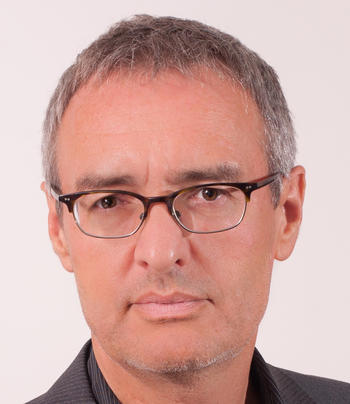Roberto Simanowski
Temporal Communities Distinguished Fellow of Global Literary Studies
Research Area 4: "Literary Currencies"
October 2020–April 2021
Fakes and Facts as Art: Photography and Authorship in the Age of Digital Media
Multi-linear, collaborative, participative, remix and software-based forms of artistic production with and within digital media have revitalised the drive of 1960s avant-garde art to undermine the artist as the meaning-producing centre of the artwork, i.e. through forms of chance and interactive art (Cage, Kaprow, Cunningham, Ascott). One example of such a revival is the genre of "Data Art" (Manovich) or "Database Aesthetics" (Vesna), the mapping of data found online (i.e. "communicative ready-mades") and their visual transformation into aesthetic artefacts. The result, very often, is an accurate reproduction of reality which resembles photography as well as the scientific writing style of late nineteenth century Naturalism. Photography and Naturalism have both been criticised (i.e. by Camus, Adorno, Bürger) for what the aesthetic avant-garde of the 1960s and more recent concepts of non-personal "uncreative wiring" (Goldsmith, 2011) in the context of digital media praise: the lack of a subjective perspective of the artist, the admiration of brute matter, and the surrender to randomness.
Against this background, the project at EXC 2020 operates on two fronts: on the one hand, it engages in various case studies in order to tackle the different (creative and uncreative) forms of data art, their rhetoric either of presence or representation, and their status as art (vs. simple application of available technical tools). On the other hand, the project discusses the reverse shift from the documentation of real or brute matter to its manipulation via digital technology as occurs in "post-photography". The central example here is Julius von Bismarck's Image Fulgurator, a device that intervenes in the photographs of others by generating an extremely rapid projection of an image triggered by nearby camera flashes. As a result, those pictures will contain signifiers (Magritte's dove onto a portrait of Mao at Tiananmen Square in Beijing, a cross onto Barack Obama's lectern in Berlin) that do not correspond to reality but the personal perspective of Julius von Bismarck. A central reference for the discussion will be Walter Benjamin's lecture Der Autor als Produzent (1934) and his letter on Malerei und Photographie (1936), where he demands a creative appropriation of the means of artistic production similar to John Heartfield's photomontages.
The discussion of creative vs. uncreative, intentional vs. non-intentional aesthetic expression is finally linked to the role of the interpretation of an artwork and the importance of authorship behind it. In light of the increasing problem of fake news and conspiracy theories, the project considers aesthetic engagement as an exercise in the necessary traits of ambiguity and self-scepticism. Insofar as it never reaches the truth and accommodates multiple perspectives, aesthetic engagement, described as the "nihilistic vocation of hermeneutics" (Vattimo) and the "vacillation of aesthetic signifiers" (Menke), is taken to be the antidote to our divisive political climate. The final question probes to what extent such an engagement and its possible outcome are undermined by "pure, meaningless materiality" (Menke) or random, uncreative, non-intentional authorship.
Roberto Simanowski is a scholar of media and cultural studies and holds a Ph.D. in literary studies and a Venia Legendi in media studies. He is the founder and editor of the journal on digital culture and aesthetics dichtung-digital.org (1999–2014) and the author of several books on digital literature, culture, and politics, including Interfictions. Vom Schreiben im Netz (Suhrkamp 2002), Digital Art and Meaning (University of Minnesota Press 2011), Data Love and Facebook Society (both Columbia University Press 2016 and 2018), Digital Humanities and Digital Media: Conversations on Politics, Culture, Aesthetics and Literacy (Open Humanities Press 2016) as well as The Death Algorithm and Other Digital Dilemmas (CHOICE award for Outstanding Academic Titles for 2019), Waste: A New Media Primer (both MIT Press 2018) and Sozialmaschine Facebook. Dialog über das politisch Unverbindliche (together with media scholar Ramón Reichert, Matthes & Seitz 2019). Roberto Simanowski taught as professor of German Studies at Brown University and as professor of Digital Media Studies at the University of Basel and at City University of Hong Kong.
